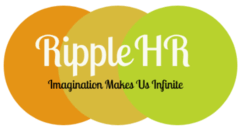People Analytics or analytics in HR is the art of collecting data about people. It is one of the smartest ways to understand your people and your company culture. In this blog, we will share few ways in which you can use data analytics to strengthen the culture of your company.
A lot of research has been done on this so we’ll just share the most applicable ones. A study by a team from some best consulting firm and MIT showed that a team with a high level of “collective intelligence” is more productive and innovative, with team members more likely to share knowledge.
People and HR analytics are often used interchangeably. Both terms are about the statistical analysis of people data. Of these terms, HR analytics became the most popular but let’s discuss both.
Why is data/people analysis important?
Not only does it helps us make more informed decisions but through this you also gain more insights into business operations. The problem is that too many people try to analyse data without any understanding of the data. They do this because they think that data analysis is all about manipulating numbers but that isn’t the case. Data analysis is about trying to find patterns in the data.
Talking about the importance of HR Analytics, there is a need to use the technology for measuring the right data. HR analytics provides the means to measure, analyse and improve the effectiveness of HR activities and programs by translating data into usable knowledge and actionable insights and delivering its value and impact to HR and to the organization as a whole. With the help of HR data analytics, it is possible to identify critical issues within an organization and take corrective measures to rectify them.
Business analytics is one of the most important aspects of running a business. It often gives you the insight and information that you need to make the right decision for your business. If you need help with deciding how to make use of business analytics then you should check out the trends in business analytics.
HR analytics is beneficial to every company and hence you may use below factors along with business analytics trends that can assist you in incorporating people data into your company decisions.
Others can teach you a lot
Various departments, businesses, and academic research can show you how to apply analytics and explain what they’ve learned so far. Employee recognition programmes that are social and on-going, according to research, are the most effective.
Gather information
Smarter, not harder. That’s the motto of a data-driven culture. It’s a philosophy that says the data is a resource that can be used not only to make decisions effective but also to make them smarter and more accurate. A data-driven culture goes beyond the technology of data collection and analysis to the use of data to make better decisions and to make those decisions with less effort.
Data that is free of errors for Analytics in hr
In today’s business intelligence world, businesses are collecting data from a variety of non-traditional data sources. In order to make sense of all this data, businesses must be able to identify the data that is most important to their business. Master data management helps businesses to gain a 360 degree view of their business. The accuracy of your data determines your trustworthiness. Your data may be out-dated if your systems are slow, and your data may be erroneous if your processes are prone to errors. Make sure your HRIS is compliant with best practices in governance.
Improve your HR technical skills to gain Analytics in hr
You can do a lot with data using tools you probably already have, such as Excel. On Lynda or YouTube, you may learn about Excel and analytics. Ascertain that your team is capable of using relevant statistical approaches and correctly interpreting the data.
Spend your money wisely
If you don’t have a budget for analytics, look for ways to divert funds from other areas that could benefit from analytics. With the help of the finance department, evaluate the costs and benefits of action vs. inaction.
Try out a tool
The practice of collecting and analysing information about individuals, groups, and entire populations is known as market research. Primary Market research is a useful tool for business growth and development. Try software that allows you to save, view, and analyse your own data in a secure manner. Firms that are master at analysing their data are the ones that are winning the game. The bigger the data, the more important it is to understand what’s happening and to know how to utilize it. But before you can even do that, you need the data. That’s where secondary market research comes in. Secondary market research is an excellent way to learn more about your customers, prospects, and competitors.
Bring varied skill sets together for proven Analytics in hr
The process of measuring and analyzing data in order to make better human resource choices is known as workforce analytics. This is the process of gathering and analyzing information in order to make better human resource decisions. It increases employee engagement, retention, and productivity. Workforce analytics assists you in measuring, analyzing all require skill sets and improving your workforce.
Keep your attention on your work
Discover what motivates sales growth, customer loyalty, and product development. Prior to concentrating your efforts on more narrowly focused HR goals, identify quick wins with demonstrable business benefit. Examine how your employees align with your stated culture and values by looking at the rewards they offer and receive for showing those values.
Make the worth clear to address Analytics in hr
All stakeholders, including employees, must understand how people analytics may help them. An internal social feed promotes, contributions and raises the value of appreciation. Aggregate data analysis aids in the identification of performance trends among people, teams, and the company as a whole.
We hope you enjoyed this blog post about how to use People Data Analytics to improve Culture! We know that data can be confusing and sometimes even intimidating. But we also know that when you know how to approach the data, you can see how it can be a powerful tool in your toolbox as you continue to grow and improve your culture. We hope that this blog post has helped you learn how you can use people data analytics to strengthen your culture, and that you will share it with your colleagues and friends! Thank you for reading.




